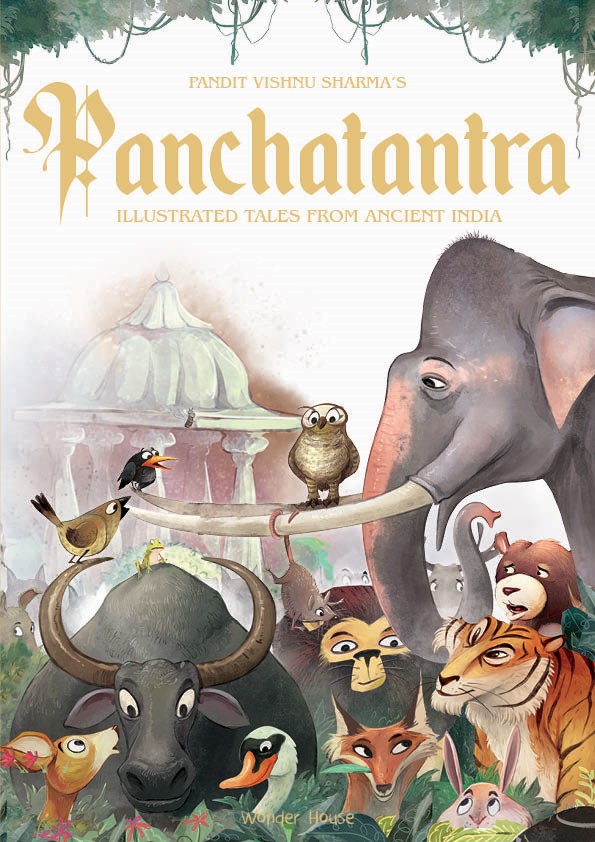In our childhood, we all remember reading Panchatantra ki kahaniyain (Panchatantra Stories). But, why Indian literature is so possessed about it. What does Panchatantra mean? How it can be beneficial for the kids? What are the five principles of Panchatantra? Where can I read Panchatantra Stories, Panchatantra Tales?
In this article:
Before we deep dive into this to understand the facts, let’s start with;
What is Panchatantra?
Panchatantra (Sanskrit: पञ्चतन्त्र) was written thousands of years ago by the Pandit Vishnu Sharma. Panchatantra is one of the best collections of fables for young minds, which is even relevant today. The original text of Panchatantra contains Sanskrit prose and stanzas of verse, with the stories based on one of the five principles of Panchatantra. Today Panchatantra stories are available in multiple languages, including English and Hindi.
Why Vishnu Sharma wrote Panchatantra?
How did the Panchatantra stories come about? As per its own story King Amarashakti, who used to rule the Mahilaropya in southern India, asked the Pundit Vishnu Sharma to teach his three naughty Princes who could not sit still to study.
So, Vishnu Sharma decided to use storytelling as a means to teach them new things as they were really naughty to understand and follow the conventional teaching methods. He was successful as Panchatantra teaches the value of justice and gives essential life lessons while entertaining.
How many parts are there in Panchatantra?
Panchatantra is a Sanskrit word derived from 2 words ‘Pancha’ means five, and ‘tantra’ means systems. Panchatantra has almost 50 stories, divided into five volumes. Panchatantra Tales are based on the following five principles.
- Mitra Labha: Mitra Labha (Gaining Friends) is a collection of stories related to winning friends. The stories under this principle teach us the importance of friends and how good company leads to success.
- Mitra Bheda : Mitra Bheda (Losing Friends) is a collection of stories related to losing friends. The stories cover 2 themes, Losing Friends is traumatic, and why do we lose friends.
- Aparïksitakárakam (acting without thinking) : It is a rare collection of stories about how imprudence leads to losing what is important. These tales teach us why Actions without thought should be avoided at all costs and How important it is to think out and plan your actions.
- Labdhapranásam (Loss of gains): The stories from Labdhapranásam volume of Panchatantra includes talks about how to come out of the difficult situations without losing things. Everyone (Kids or Adults) in their lifetime have to go through difficult circumstances, how we face these difficult circumstances, and come out of them without losing things like faith are covered in this section.
- Kákolùkïyam (Crows and Owls). : This volume has stories on rules and strategies of war and peace. Kákolùkïyam (Crows and owls) can be a good training ground for young minds to understand the value of peace over war.
What is the purpose of Panchatantra?: Benefits of reading Panchatantra Stories
Fun reading
Since most of the characters in Panchatantra are animals, which makes it a fun read for children. They easily remember the story and can relate to it in specific ways. Also, it provides a strong moral message to them.
Raising Curiosity and Furthering Brain Development
Panchatantra Fables are narrated in a fun-filled manner, which will definitely ignite curiosity among the children. Kids will learn about human action and reaction in different situations through narratives having animals. Such stories will help in their brain development and help them in learning how to handle real-life situations.
Priceless Moral Lessons
Panchatantra stories are the best guide to enroot moral values in our children since each tale has a moral lesson in its end without being too much preachy.
Rich Indian heritage values
Panchatantra tales are rich in Indian culture and values and are relevant to all communities across the world. Panchatantra focuses on four objects of human desire
artha (worldly wisdom),
neeti (policy),
dharma (religion or morally proper conduct),
kama (pleasure of the senses).
Quality Time
Storytelling is a good bonding time for the child and parent where the parent can engage the child in the narrative and also ask questions to make it a two-way conversation.
Reading habit
Imbibe good reading habits in young learners at an early age so that they can enjoy listening and reading stories.








